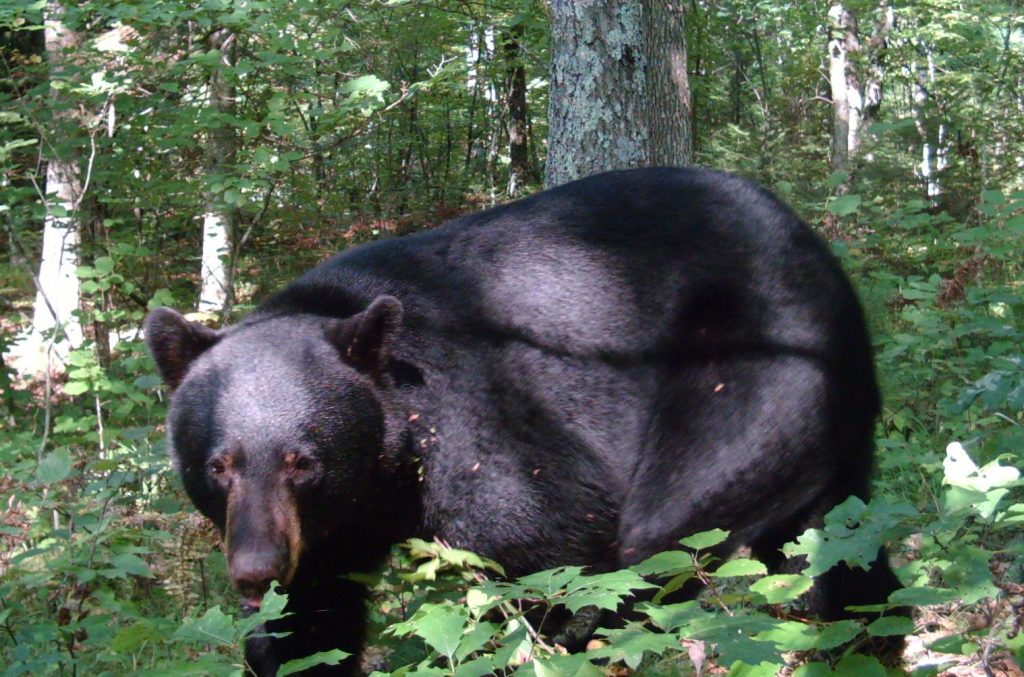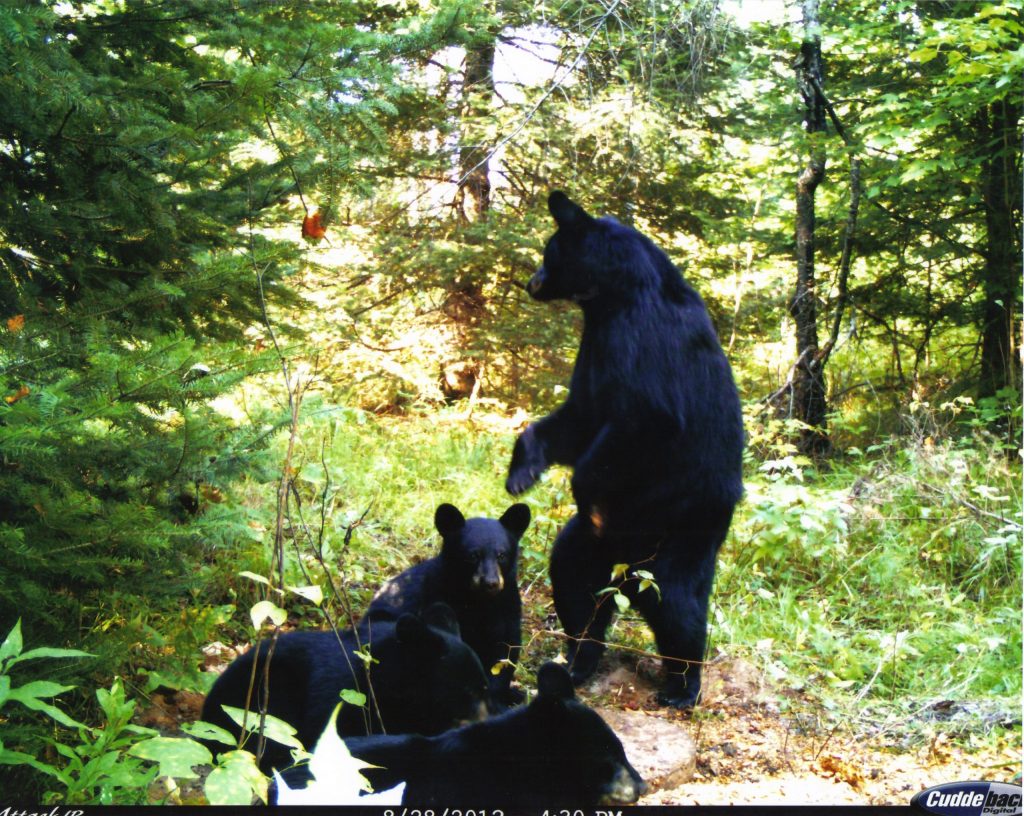 Male and female black bears are together only during breeding season. A female may mate with several males during her estrus. Cubs from the same litter may have different fathers.
Male and female black bears are together only during breeding season. A female may mate with several males during her estrus. Cubs from the same litter may have different fathers.
Fertilized eggs do not implant on uterine walls immediately. Instead, they free-float in the uterus until November, about five months. When the eggs implant, they grow swiftly.
- Mating is in late May or June, sometimes in early July. A male will roam great distances during the breeding season looking for a receptive female.
- Males and females are together only during breeding season. A female may mate with several males during her estrus. Cubs from the same litter may have different fathers.
- Females reproduce best when they weigh more than 175 pounds in the fall. They are in better physical condition at that weight or above.
- Once pregnant, females concentrate on getting fat to ensure healthier cubs and to have enough milk for them. If they do not become fat enough, they lose their cubs.
- Fertilized eggs do not implant on uterine walls immediately. Instead, they free-float in the uterus until November, about five months. When the eggs implant, they grow swiftly.
 Females breed at 2-1/2 years if they have had plenty of food, are in good condition and of a proper weight, giving birth at three years. First-litter age is more commonly 5-1/2 years. On the edges of black bear range where food is in short supply, females may not grow large enough to have successful pregnancies until they are 10-1/2 years old.
Females breed at 2-1/2 years if they have had plenty of food, are in good condition and of a proper weight, giving birth at three years. First-litter age is more commonly 5-1/2 years. On the edges of black bear range where food is in short supply, females may not grow large enough to have successful pregnancies until they are 10-1/2 years old.- Cubs are born in January, weighing eight ounces to one pound at birth, usually closer to one pound.
- The mother loses 3/8-2/3 pounds a day as her system converts fat, water and other body energy to milk.
- Cubs typically open their eyes after 28–40 days and begin walking after five weeks. At six weeks, they weigh 2-3 pounds. By early April, most cubs weigh 3-10 pounds, depending on the mother’s weight and number of littermates competing for milk. At six months, cubs will weigh 40-60 pounds. They reach full growth at five years.
- Mother and cubs leave the den in early April to mid-April.
- Cubs are natural climbers, climbing from the time they leave the den.
- When they leave the den, the mother bear usually looks for a big tree, at the base of which she will rake a bed of leaves and/or needles (pines are favorite trees), and which the cubs can climb for security.
- As green-up begins, cubs and mother become more active, with the range of travel and feeding expanding as summer days pass. Mother and cubs enter the fall slowdown period together and hibernate together. They remain together after emergence until May, when the female bear is ready to mate again. The cubs will be yearlings.
- Often a male bear will attempt to kill the cubs in their first year so the female will come into heat and can be bred, thus shortening the standard two-year cycle by 50 percent.
This information is an excerpt from The Bear Hunting Obsession of a Driven Man, by Bill Wiesner. The book has 10 in-depth how-to chapters on black bears and black bear scouting, hunting and processing, plus 10 entertaining “memoir” chapters on black bear hunting incidents and the people who hunt them. For forty years “Bear Crazy” Bill ate, slept, thought, dreamed – and acted upon – hunting black bear. He tagged 57. Bill and his family (wife Sandy and sons Brad and Bryan) have taken more than 100 bears over baits, by spot-and-stalk, and behind hounds. They have taken bears with rifle, shotgun with slugs, crossbow, selfbow (homemade), recurve bow, longbow, compound bow and muzzleloader. Wiesner knew bears and bear hunting.

